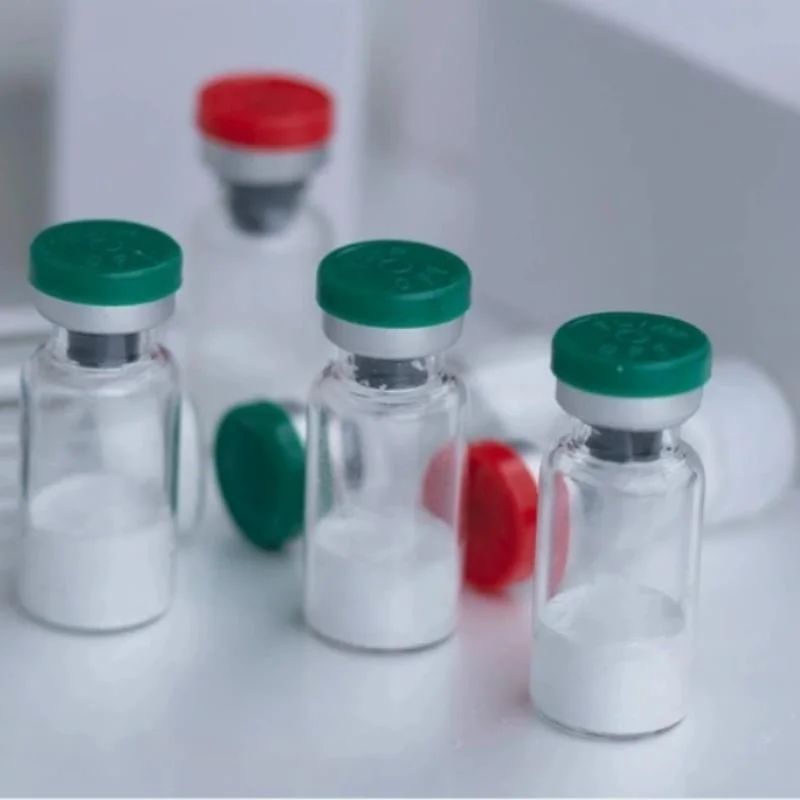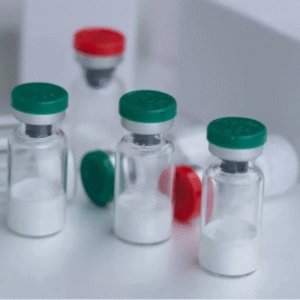Composition:
TB500 is a synthetic version of a naturally occurring peptide known as Thymosin Beta-4 (Tβ4). While full-length Thymosin Beta-4 is a 43-amino acid peptide, TB500 is a synthetic fragment (typically comprising 17 amino acids) that retains the actin-binding region responsible for most of its biological activity.
-
Peptide Sequence (TB500 fragment):
Ac-Ser-Asp-Lys-Pro-Asp-Met-Ala-Glu-Ile-Glu-Lys-Phe-Asp-Lys-Ser-Lys-Leu-NH₂ -
Mechanism of Action:
TB500 is designed to mimic the activity of the active region of Tβ4 by promoting cell migration, angiogenesis (formation of new blood vessels), and actin cytoskeleton remodeling, which are critical to tissue regeneration and repair.
Benefits:
Research and preclinical studies have suggested the following potential therapeutic uses for TB500:
-
Enhanced Wound Healing:
-
TB500 accelerates the repair of skin, muscle, and tendon injuries by promoting cell migration and tissue regeneration.
-
In animal studies, it has demonstrated improved re-epithelialization and reduced scar formation.
-
-
Anti-Inflammatory Effects:
-
May reduce pro-inflammatory cytokine activity, contributing to lower inflammation in injured or stressed tissues.
-
-
Improved Muscle Recovery and Performance Support:
-
Shown to aid in muscle fiber repair and regeneration, especially in contexts of muscle overuse or damage.
-
-
Cardiovascular and Neurological Support (Experimental):
-
TB500 has been studied in animal models for its role in angiogenesis and potential neuroprotective effects, though more human research is needed.
-
-
Reduced Fibrosis:
-
Some studies indicate potential in reducing fibrotic tissue development, which is important in chronic injury and organ damage.
-
Note: While TB500 shows promise in preclinical and veterinary research, it is not approved for human use by regulatory bodies such as the FDA and should be considered an experimental compound.
Sample Dosage Protocol:
Disclaimer: The following protocol reflects common practice in research environments. This is not intended as a medical recommendation.
Initial Loading Phase:
-
Dose: 2–2.5 mg
-
Frequency: Twice weekly
-
Duration: 4–6 weeks
Maintenance Phase:
-
Dose: 2 mg
-
Frequency: Once every 7–14 days
-
Duration: As needed, depending on the goal and response
Route of Administration:
-
Subcutaneous (SC) or intramuscular (IM) injection
-
Typically administered near the site of injury or systemically for general recovery support
Safety and Considerations:
-
Side Effects: TB500 has shown a relatively low incidence of side effects in animal and limited human data, though potential risks may include injection site irritation, headache, or fatigue.
-
Contraindications: Due to its effect on cell migration and angiogenesis, TB500 use should be approached cautiously in individuals with active malignancy or uncontrolled cell growth disorders.
-
Regulatory Status: TB500 is not approved for therapeutic use in humans and is sold strictly for research purposes.


Reviews
There are no reviews yet.